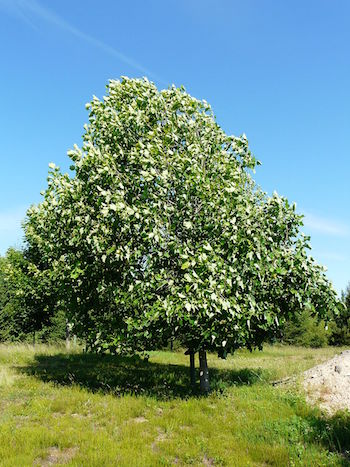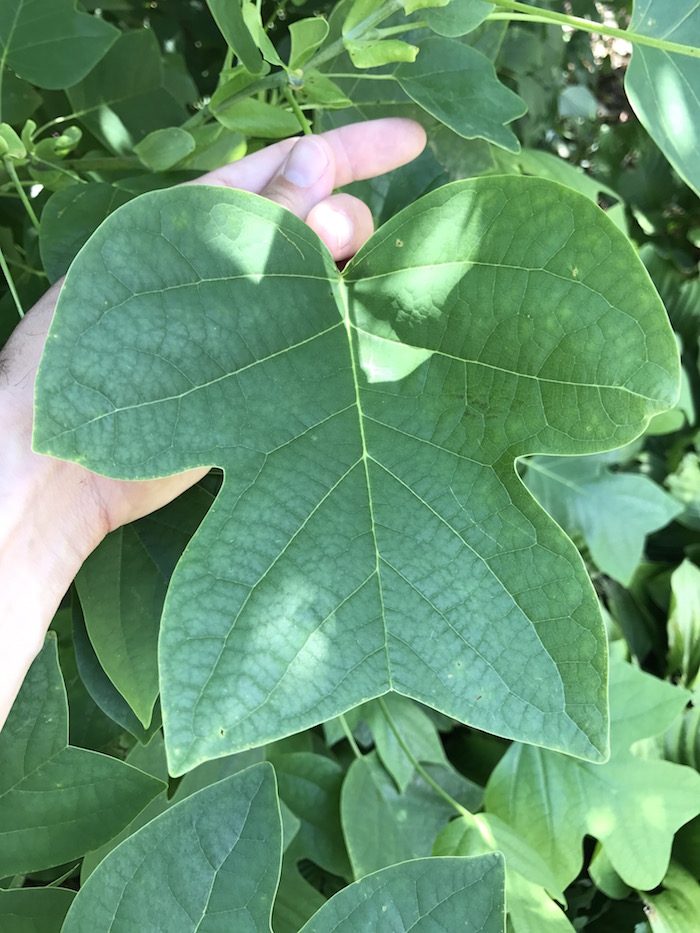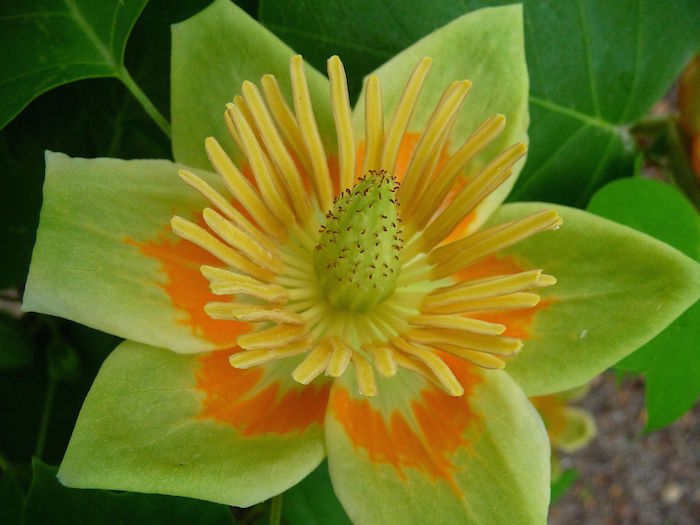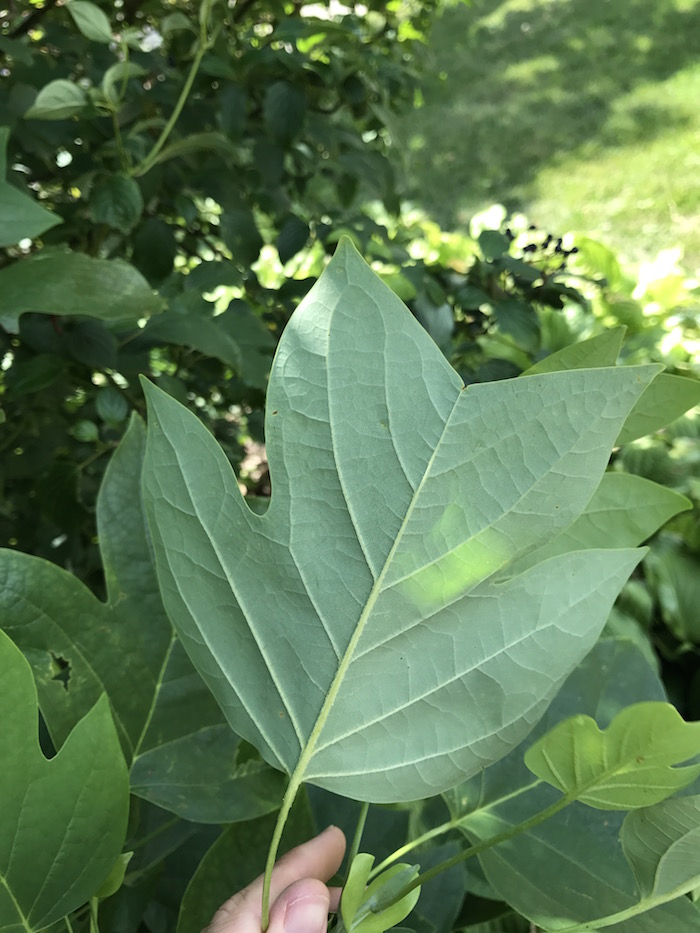
Description:
Tulip poplars are very unusual trees in Minnesota, as they are only just barely hardy. Its leaves are unusually shaped and resemble t-shirts, with 4-6 sharp lobes and a shallow v-notch at the leaf’s tip. They are simple and alternate, with smooth surfaces, dark green above and pale whitish below. The flowers resemble tulips, hence the common name, and are light green to yellow. They can be difficult to see because unlike many other trees in the Magnolia family, the flowers develop after the tree has leafed out. Desiccated flowers remain on the tree in the fall.
Tulip poplars are not true poplars (genus Populus), but are instead more closely related to magnolias. Tulip poplars are technically hardy in Minnesota, but do not seem to do well in the harsh northern winter. This particular tree is one of the only, if not the only, tulip poplar planted on campus, although there are a few examples in the residential neighborhoods around the campus. Its wood is light and brittle, and it is a popular wood for veneer or pulp. Eastern white pine (Pinus strobus), a common pine in Minnesota and tulip poplar were once the largest trees in the Eastern Forests of North America.
Issues:
Tulip poplars are unusually free of many pests and pathogens. The yellow-poplar weevil can cause problems, as can a few fungal cankers.
Other Resources:
Photo Credit: Public Domain CC by SA 3.0




